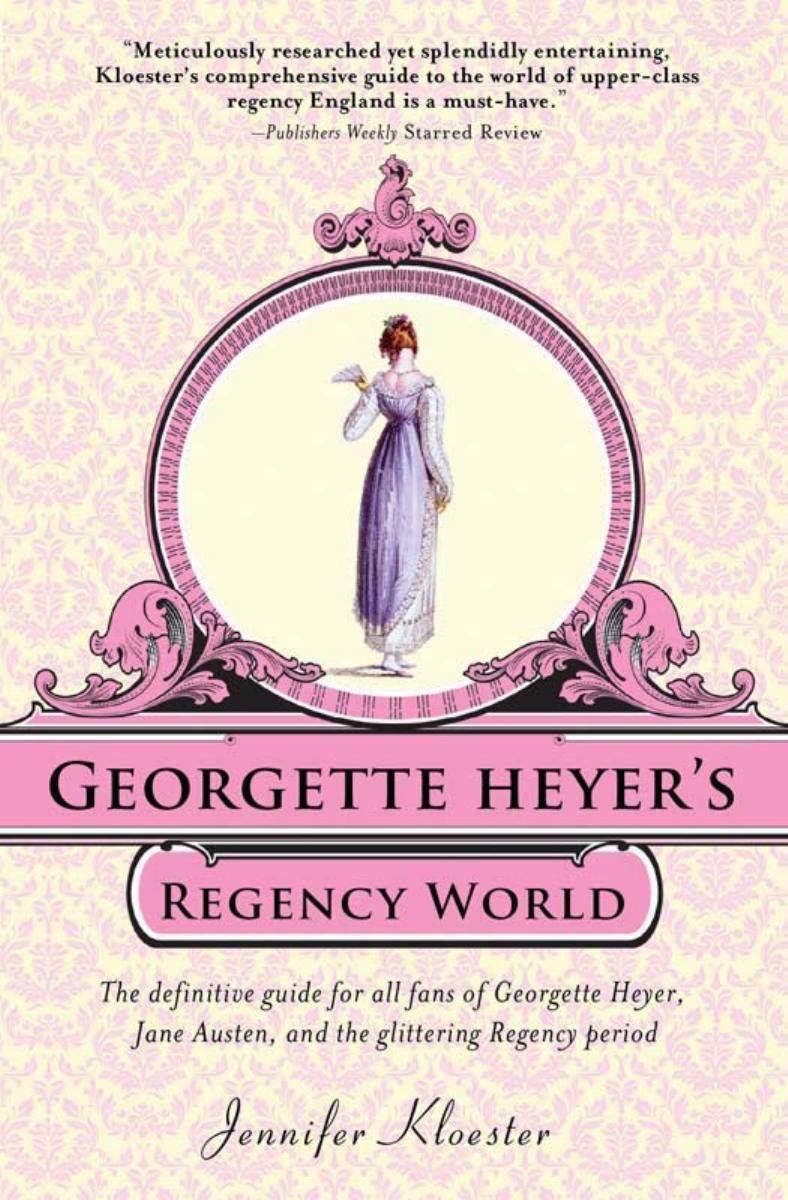Georgette Heyer's Regency World by Jennifer Kloester

Author:Jennifer Kloester
Language: eng
Format: mobi, epub, pdf
Publisher: Sourcebooks, Inc.
Published: 2010-01-18T22:00:00+00:00
The stage was the most common form of public transport although many people,
such as the Duke of Sale in The Foundling, found it an extremely
uncomfortable way to travel.
ON THE ROAD
Travelling by coach, whether public or private, could be dangerous. Although highwaymen were becoming scarce there were plenty of other hazards to impede a journey or play havoc with life and limb. On the public stage and the Mail, as one of the passengers reminded the coachman in The Corinthian, there were strict rules governing the behaviour of coachman, guard and passengers. A waybill listing the names, pick-up points and destinations of the passengers who had booked a seat was given to the guard at the commencement of each journey and it was his job to see that the coach made the correct stops and kept to its timetable. Although it was possible to gain a place on the stage or Mail without having booked or paid in advance, those travellers already on board and uncomfortably crowded sometimes objected vociferously to additional passengers being allowed into the coach.
Overloading of coaches, with either people or baggage, was prohibited by the coach companies, as was furious driving and allowing passengers to take the reins. Drinking was also forbidden but was difficult to control and coachmen, such as the one in The Reluctant Widow who transported Elinor Rochdale to the village of Billingshurst, were rarely averse to downing a quick glass in the taproom of a posting-house while the horses were changed. After setting off again it was not uncommon for the coachman to let eager young bloods (themselves sometimes under the influence) drive the coach for a spell—an unfortunate occurrence which frequently ended (as it did in The Corinthian) in the coach being overturned and horses and passengers injured. Most coaches, and particularly those that travelled at speed, carried a three-foot-long coaching horn, also known as a ‘yard of tin’. A vital part of the guard’s equipment on the public stage or mail coach, it was the coaching horn that enabled the guard to keep to the timetable for he blew a call to summon the passengers before departing from one posting-house and again on approaching the next. The sound of a coaching horn told the ostlers to have fresh horses ready for the change and alerted the innkeeper to the need for food and drink. Ostlers were the grooms or horse-keepers who worked at the coaching-inns and posting-houses situated along the great network of post roads that criss-crossed England during the Regency. In addition to caring for the horses owned by the inn, ostlers were also responsible for the horses left there after a change of teams was completed at the end of a stage. Trained to replace carriage horses in under two minutes, the best ostlers could change a team in fifty seconds. They were expected to be ready with fresh animals at the first sound of the coaching horn and could only expect a tip if they were quick about their work.
Download
Georgette Heyer's Regency World by Jennifer Kloester.epub
Georgette Heyer's Regency World by Jennifer Kloester.pdf
This site does not store any files on its server. We only index and link to content provided by other sites. Please contact the content providers to delete copyright contents if any and email us, we'll remove relevant links or contents immediately.
| Ancient & Classical | Arthurian Romance |
| Beat Generation | Feminist |
| Gothic & Romantic | LGBT |
| Medieval | Modern |
| Modernism | Postmodernism |
| Renaissance | Shakespeare |
| Surrealism | Victorian |
4 3 2 1: A Novel by Paul Auster(12286)
The handmaid's tale by Margaret Atwood(7679)
Giovanni's Room by James Baldwin(7192)
Asking the Right Questions: A Guide to Critical Thinking by M. Neil Browne & Stuart M. Keeley(5639)
Big Magic: Creative Living Beyond Fear by Elizabeth Gilbert(5614)
Ego Is the Enemy by Ryan Holiday(5294)
The Body: A Guide for Occupants by Bill Bryson(4974)
On Writing A Memoir of the Craft by Stephen King(4863)
Ken Follett - World without end by Ken Follett(4645)
Adulting by Kelly Williams Brown(4487)
Bluets by Maggie Nelson(4474)
Eat That Frog! by Brian Tracy(4435)
Guilty Pleasures by Laurell K Hamilton(4360)
The Poetry of Pablo Neruda by Pablo Neruda(4040)
Alive: The Story of the Andes Survivors by Piers Paul Read(3969)
White Noise - A Novel by Don DeLillo(3954)
Fingerprints of the Gods by Graham Hancock(3942)
The Book of Joy by Dalai Lama(3901)
The Bookshop by Penelope Fitzgerald(3777)
